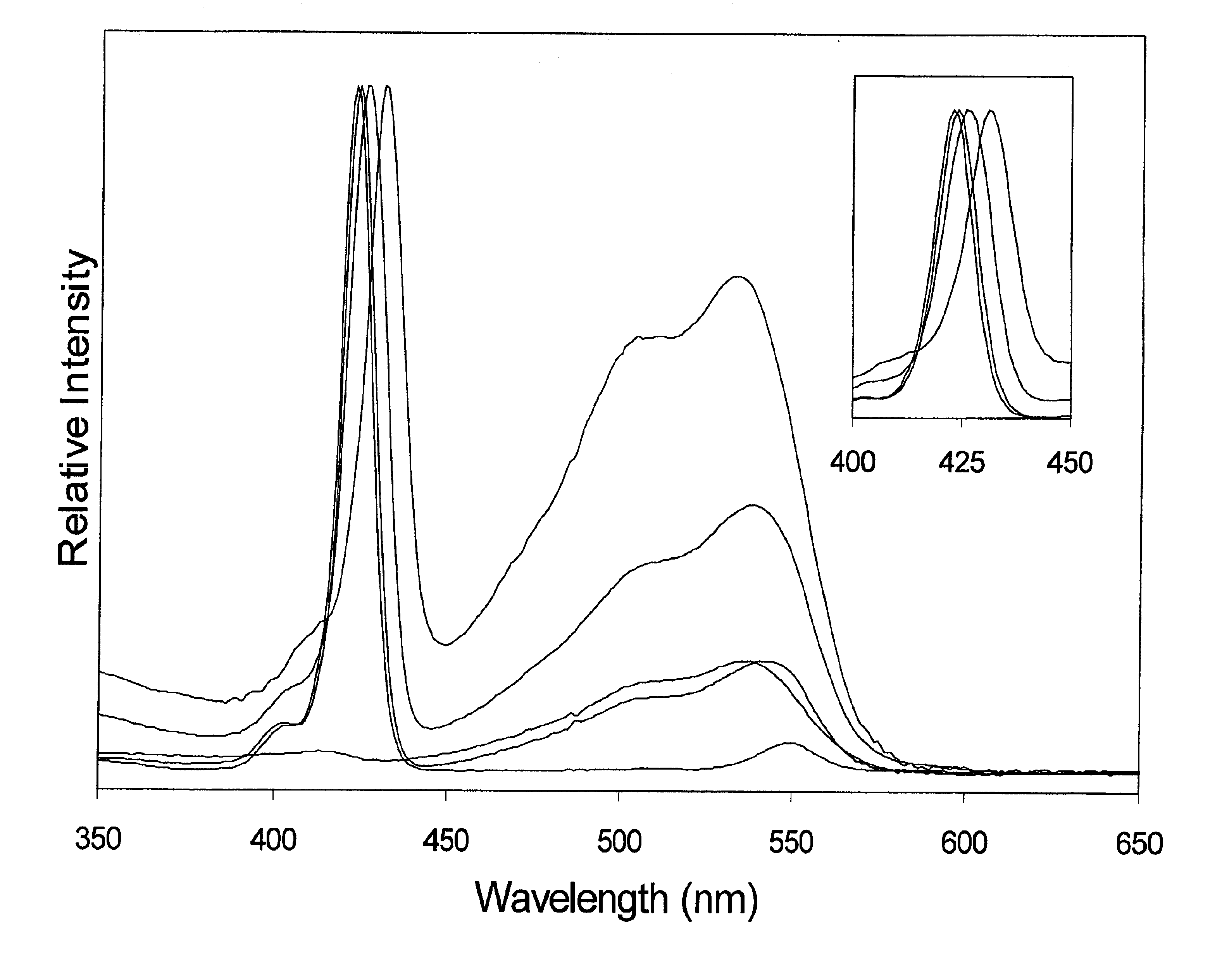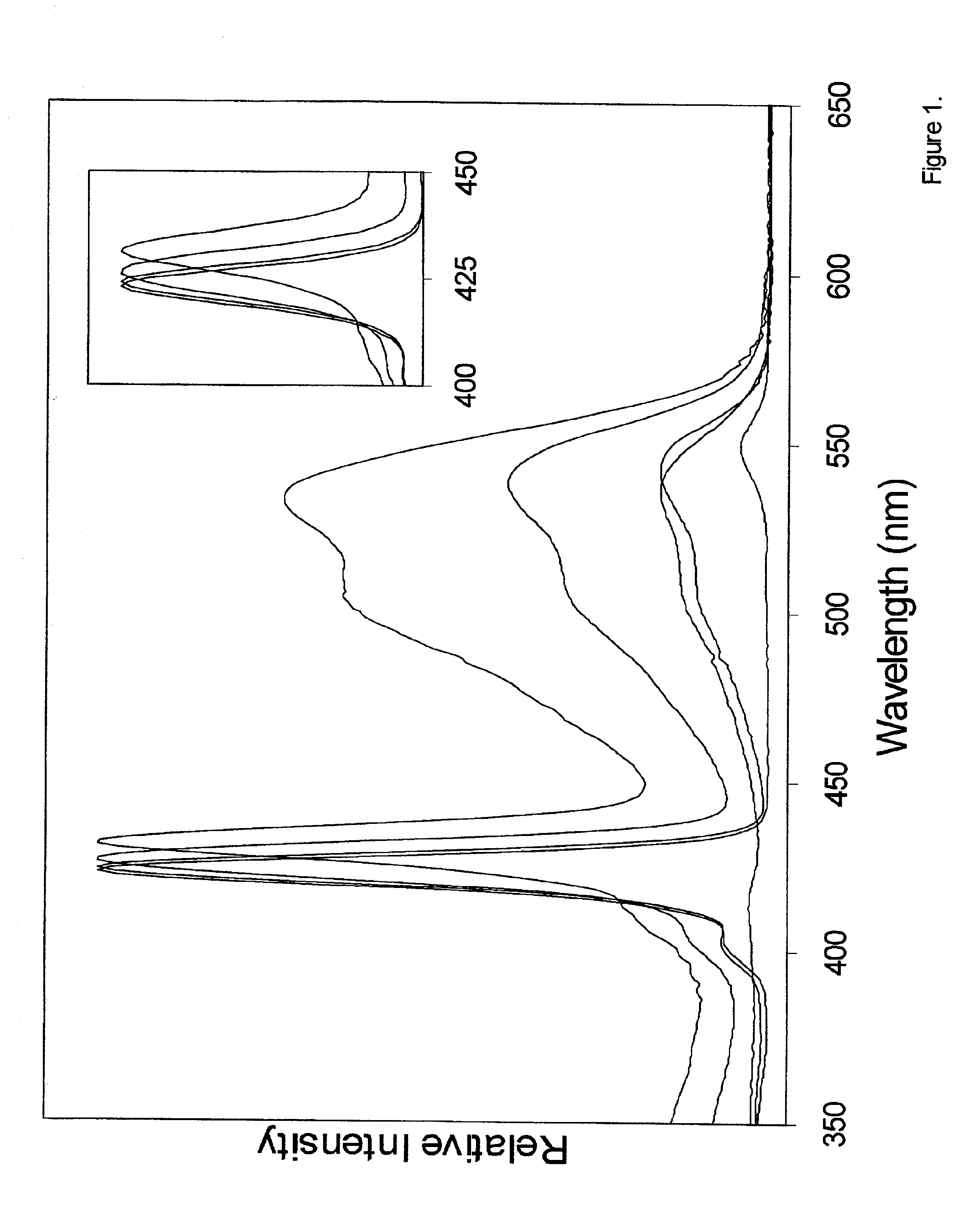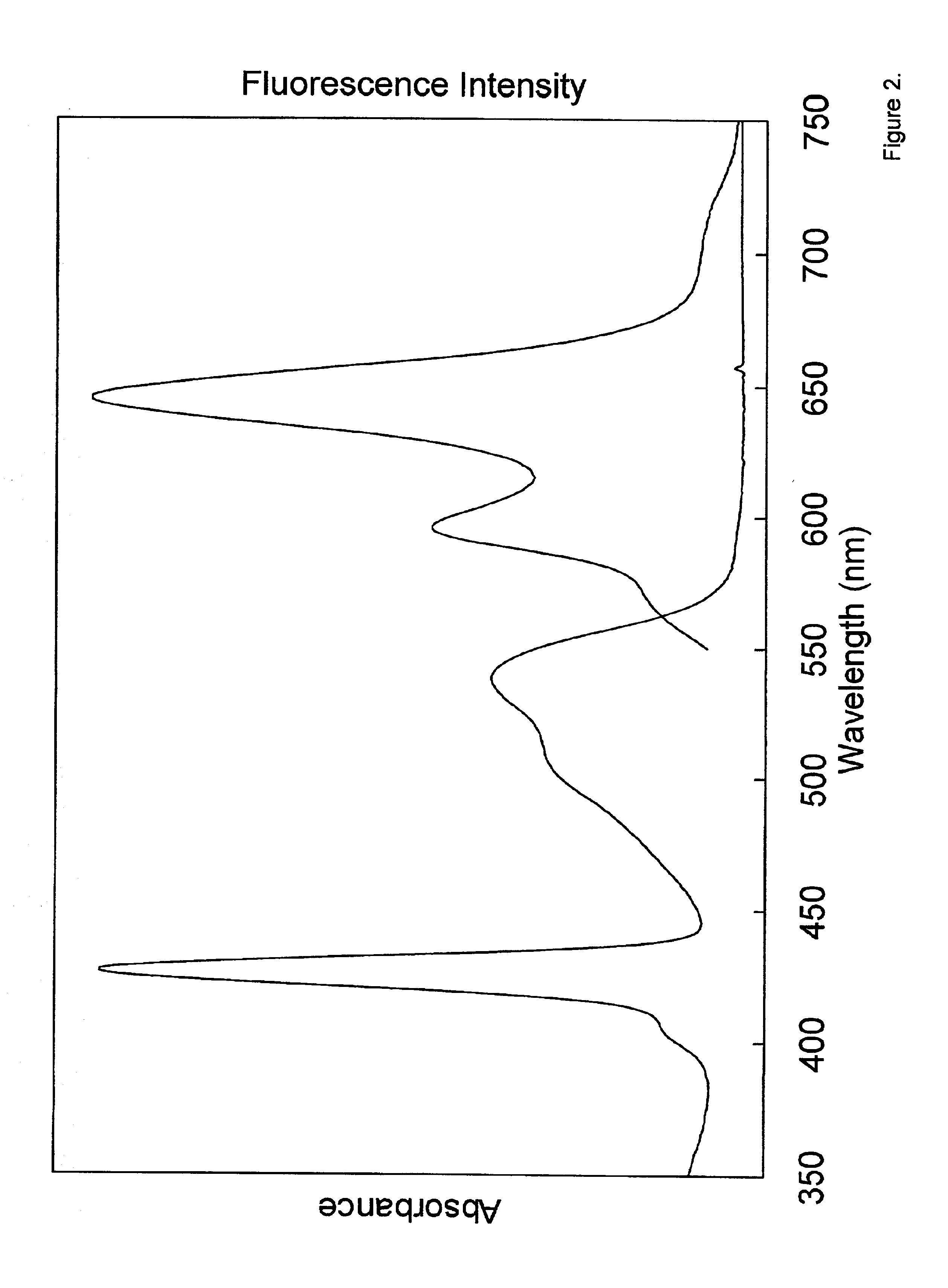Synthesis of perylene-porphyrin building blocks and polymers thereof for the production of light-harvesting arrays
- Summary
- Abstract
- Description
- Claims
- Application Information
AI Technical Summary
Benefits of technology
Problems solved by technology
Method used
Image
Examples
Embodiment Construction
[0037]Among other things, we here present the synthesis of perylene-porphyrin building blocks and their use in Glaser, Sonogashira, or Suzuki polymerizations. In certain embodiments the building blocks bear synthetic handles (4-ethynylphenyl, 4-iodophenyl, bromo) at the trans (5, 15) meso-positions of a zinc porphyrin, and contain one, two, or four perylene-monoimide dyes attached at the 2- or 3,5-positions of the non-linking meso-aryl rings of the porphyrin. In certain embodiments each perylene bears one (9-position) or three (1, 6, and 9-positions) 4-tert-butylphenoxy substituents and zero or two isopropyl groups on the N-aryl unit for increased solubility. In each case the intervening linker is a diarylethyne unit that bridges the N-imide position of the perylene and the meso-position of the porphyrin. The choice of perylene, linker, and site of attachment to the perylene has emerged from a systematic study of a number of perylene-porphyrin constructs. In certain embodiments, the...
PUM
| Property | Measurement | Unit |
|---|---|---|
| Length | aaaaa | aaaaa |
| Molar density | aaaaa | aaaaa |
| Substance count | aaaaa | aaaaa |
Abstract
Description
Claims
Application Information
 Login to View More
Login to View More - R&D
- Intellectual Property
- Life Sciences
- Materials
- Tech Scout
- Unparalleled Data Quality
- Higher Quality Content
- 60% Fewer Hallucinations
Browse by: Latest US Patents, China's latest patents, Technical Efficacy Thesaurus, Application Domain, Technology Topic, Popular Technical Reports.
© 2025 PatSnap. All rights reserved.Legal|Privacy policy|Modern Slavery Act Transparency Statement|Sitemap|About US| Contact US: help@patsnap.com



